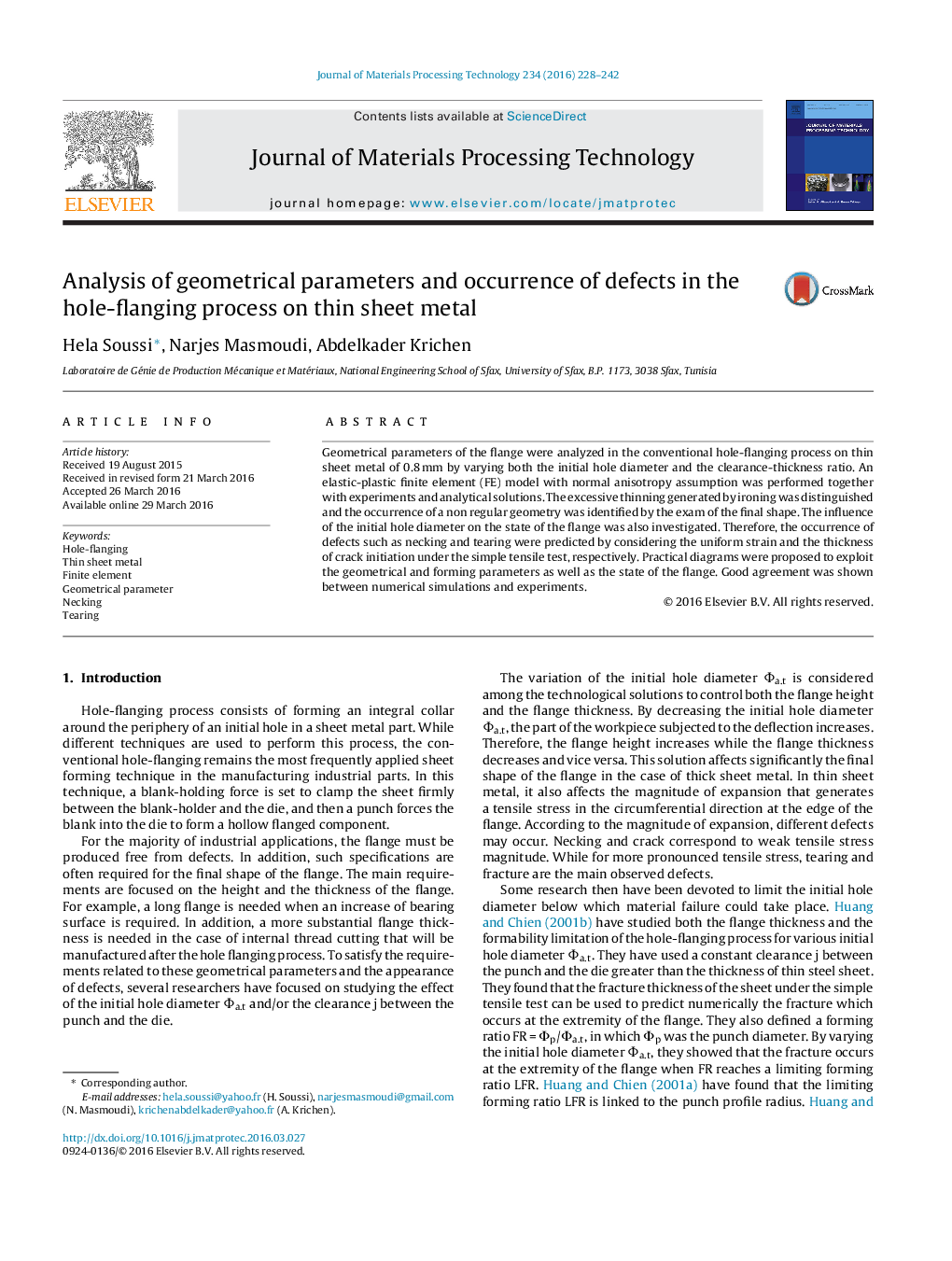| Article ID | Journal | Published Year | Pages | File Type |
|---|---|---|---|---|
| 790870 | Journal of Materials Processing Technology | 2016 | 15 Pages |
Geometrical parameters of the flange were analyzed in the conventional hole-flanging process on thin sheet metal of 0.8 mm by varying both the initial hole diameter and the clearance-thickness ratio. An elastic-plastic finite element (FE) model with normal anisotropy assumption was performed together with experiments and analytical solutions. The excessive thinning generated by ironing was distinguished and the occurrence of a non regular geometry was identified by the exam of the final shape. The influence of the initial hole diameter on the state of the flange was also investigated. Therefore, the occurrence of defects such as necking and tearing were predicted by considering the uniform strain and the thickness of crack initiation under the simple tensile test, respectively. Practical diagrams were proposed to exploit the geometrical and forming parameters as well as the state of the flange. Good agreement was shown between numerical simulations and experiments.
